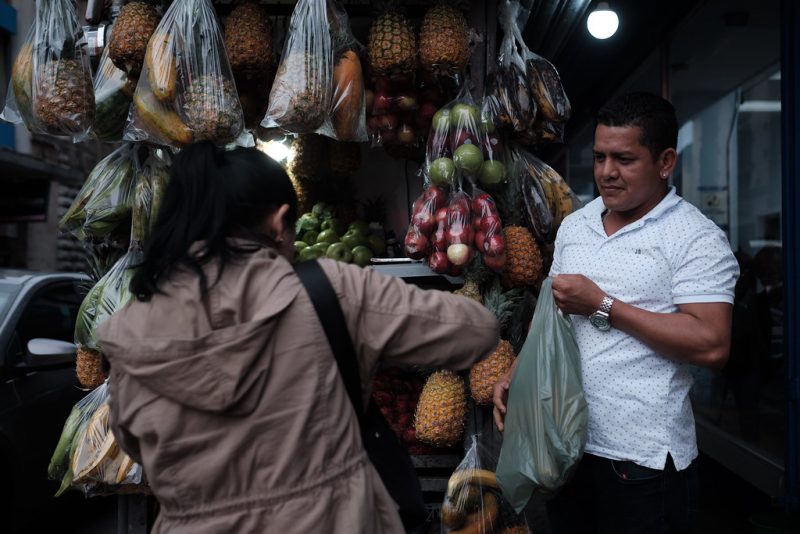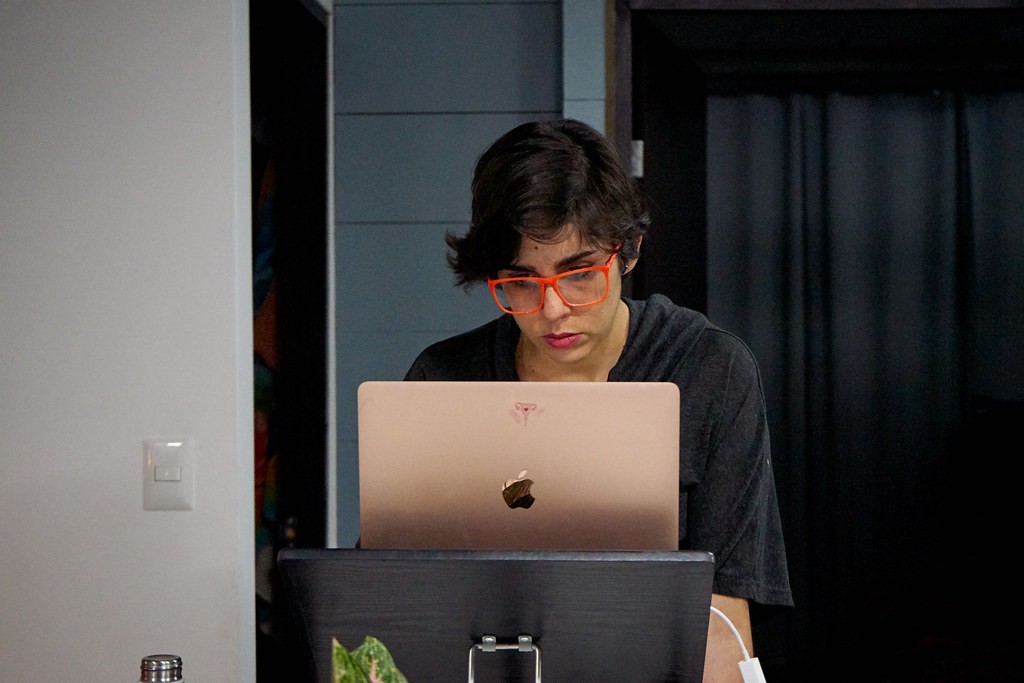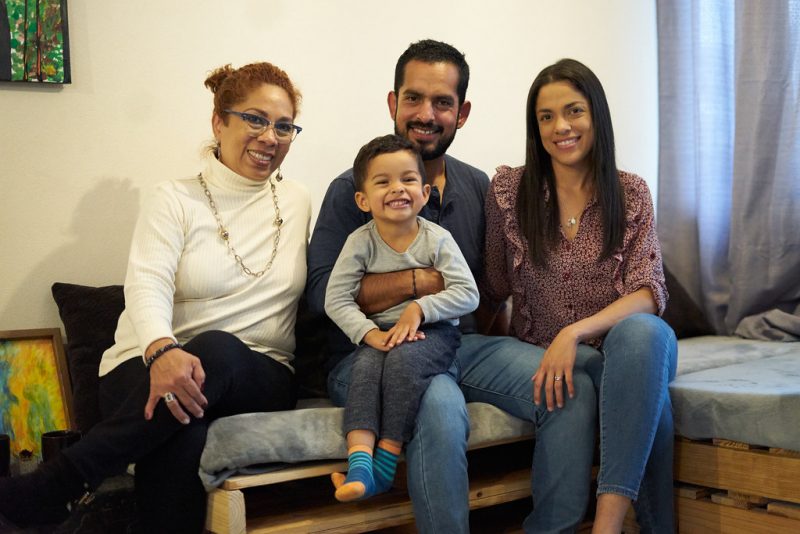Nicaraguans in Costa Rica: a Long History of Welcome and Rejection

The long history between Costa Ricans and Nicaraguan immigrants has shaped families and friendships, although discrimination and xenophobia still persists.
By Cindy Regidor (Confidencial)
HAVANA TIMES – Telling the story of the Nicas in Costa Rica means understanding the lives of hundreds of thousands of people who’ve remade their lives in a country different from their own. In this country, they’ve been welcomed in, but also rejected. Nicaraguans have sunk roots in this other country, have formed family and friendships, but have also confronted hostility due to their nationality, their accent and their economic circumstances.
In this report on the Nicaraguan Migration to Costa Rica, we take a look at some social aspects of this phenomenon which began many decades ago.
Xenophobia directed against Nicaraguans
“Xenophobia is the idea that foreigners represent a threat, and that notion is also present in Costa Rica. For a lot of years we’ve associated the Nicaraguans with the problems that vex us most: for example, the topic of security, of the public services, the employment picture,” says researcher Carlos Sandoval from the University of Costa Rica.
One of the myths about Nicaraguans is that they take jobs away from the natives, even though for years the Nicas have occupied jobs in construction, agriculture, domestic services or as security guards that are no longer attractive to the majority of the “Ticos” [Costa Ricans].

Another myth is that the Nicas take advantage of the public health system, although the public spending on immigrants in this area is barely 8%. Another belief is that the jails are full of migrants, although in reality the jail population is 87% Costa Ricans.
There are some Ticos who even use the phrase “Don’t be a Nica,” when someone behaves badly. “’Don’t be a Nica’ is said or used when someone wants to disapprove of a certain behavior that’s not considered appropriate. It might be a way of speaking or behaving that’s judged as not being up to par. Why is such behavior disparaged? Well, because it’s assumed that correct behavior is that displayed by Costa Ricans from the middle classes. The one who diverges from that produces a certain social ripple, a ripple of class also, I’d say,” Sandoval commented.
The use of the word “paisa” to identify Nicas is also common, although its meaning depends on the tone and the context. “Yes, I hear it meant as kind of an insult, but it doesn’t offend me at all because I’m proud to be a Nicaraguan,” states a young street peddler in the center of San Jose.
“The great challenge we have in Costa Rica is precisely to recognize our interdependence; that is, this Costa Rican society wouldn’t be the same without Nicaraguans. For our history, our geography, our demographics, we’re sister countries. The great cultural and political challenge that we have is to recognize ourselves in that interdependence.”
Some of the outbreaks of open xenophobia, like a violent demonstration that occurred in August 2018 in San Jose’s La Merced Park, where some Ticos yelled, “Nicas out!”, have motivated a different response from the rest of Costa Rican society. In the case of the August 2018 march, there was a different march called the next week in the center of San Jose, where the Costa Ricans chanted, “Ticos y Nicas are brothers”.
Similarly, the Costa Rican government expressly rejects xenophobia towards the Nicas in their state policies. “In the face of calls for hate and violence, reason, prudence, intelligence and solidarity should prevail. In this effort we need you and all the people of the country,” stated President Carlos Alvarado in a nationally synchronized live television broadcast days after the unprecedented, violent events in the San Jose park where Nicaraguans have traditionally congregated.
Aporopobia is another term that has recently entered the discussion; this is a fear of the poor. Is there xenophobia or aporophobia in Costa Rica? A more complete history appears in the video below.
Nicas who “don’t seem like Nicas”
There’s a perception within Costa Rica that the Nicaraguan community is homogeneous. That idea is based on some characteristics of the majority of the immigrants who for decades have come to the country. “In the context of Costa Rica, ‘Nica’ designates the poor Nicaraguans, the dark-skinned Nicaraguans, the Nicaraguans with less experience and less formal education. The other Nicaraguans aren’t Nicas,” Sandoval explains.
Nonetheless, the actual Nica community in Costa Rica has a varied physical appearance, with different skin tones, accents, “ways of speaking”, and in their origin and precedence. Also, although they’re a lesser percentage, there are Nicaraguans of different professions, university students and those from different socioeconomic strata.
Consuelo Mora, communications professional, forms part of that group of immigrants. With a Costa Rican father and a Nicaraguan mother, she was born in Costa Rica and spent her childhood there. She moved back to Costa Rica five years ago, motivated by a job opportunity as communications official for an international organization.

“[It was] a man who gave me this message, but it’s an example of what happens to me with all the taxi drivers, all the Uber drivers. They tell me: ‘But you don’t seem like a Nica, I’m always going to think of you as a Venezuelan for the way you talk and how you look,” recounts Mora. She’s not the only one this has happened to.
Jorge Lola and Melissa Miranda, both also Nicaraguans now in Costa Rica, have heard that type of comment many times. “That I don’t seem like a Nicaraguan, that I must be Venezuelan. This happens to Melissa a lot as well; [they ask] if we’re from Colombia,” Jorge comments. Miranda, who says that she’s been very well received in the country, recalls a commentary that struck her: “I was in a meeting with people that speak English, we were conversing normally in that language, and then they asked my nationality. I told them, and they responded that they didn’t know that Nicaraguans could speak English,” she relates with astonishment.
Such remarks that may seem innocuous, disguise cultural prejudices. To Consuelo Mora, they hide a mix of aporophobia, or rejection of the poor, and xenophobia, rejection of foreigners. Both phenomena manifest themselves in different ways, according to who is demonstrating them.
“My experience in Costa Rica can’t be compared with the experience of a Nicaraguan migrant who comes from an economically disadvantaged background,” Consuelo Mora reasons. Those conditions end up giving some others privileges or advantages. “I don’t have to pretend, I don’t have to put on a Costa Rican accent, for example, in order to be able to function in society, to be able to do my everyday things. However, I believe that the people from disadvantaged socioeconomic conditions who emigrate here, look for a way to camouflage themselves,” she noted.
In Costa Rica, the phrase “you don’t seem Nica” reveals a belief about the Nicaraguan population that exists in the Costa Rican social imagination, a belief that knows nothing about the diversity, and that could be indirectly interpreted as if seeming like a Nicaraguan were something negative. “The fact that one hasn’t experienced certain aggressions, and certain social violence doesn’t mean that they don’t exist, and it’s important that we pay attention when the people say that they’re on the receiving end of xenophobia or that they’re living with exclusion, classism, racism,” she reflects.
International homes: the strongest tie between Nicaragua and Costa Rica
In 2018 alone, 246,208 births, or 18% of all births in Costa Rica, involved a baby whose father or mother was Nicaraguan. There were nearly 55,000 births where both the mother and the father were Nicaraguan, notes Anthony Garcia, investigator with the National Distance-learning University. It’s a statistic that reveals the importance of the mixed families, families that experience and forge a Tico-Nicaraguan identity.
Jorge Lola is both Nicaraguan and Costa Rican. His family history is one of comings and goings between the two countries. “It’s funny, because in Nicaragua, I was from Costa Rica; and in Costa Rica, I’m from Nicaragua,” he tells us.

Everything began with his Nicaraguan mother when she was a teenager, in the year when the Sandinista revolution triumphed. Karla Moreira moved to Costa Rica in 1980, part of a flow of Nicas who left the country for political reasons. Her family took her and her sister out of the country due to pressures from the Sandinista government for the citizens to become involved in projects and ideological movements.
Karla married a Nicaraguan and had three sons in Costa Rica. After fifteen years living in that neighboring country, she opted to return to Nicaragua in 1992, when Violeta Barrios was president. “We never really let go of Costa Rica, because my mother and my sister remained living here, and the boys loved going there. We’d do that on vacation, religiously, twice a year,” Moreira recalls.
As fruit of this personal history and also of the historical contexts, Karla’s family is binational. Karla and her family left Nicaragua to return to Costa Rica in 2007, once again for political reasons, when Daniel Ortega returned to power. “From that moment, I became fearful, because I didn’t want my sons to go through a stage that my parents hadn’t wanted me to experience either,” she explains.
In 2013, Moreira returned to Nicaragua, this time for a job offer. She remained until the civic rebellion of 2018 that was brutally repressed by the Ortega regime. “Many of those of us who had left Nicaragua for here in the 80s are definitely living through a déjà vu,” she affirms.
Karla has left her native country three times due to its political instability, Daniel Ortega, and the FSLN. Amidst all the back and forth, she and her family have built a home in Costa Rica where her dual nationality is appreciated. “You always bump into a family where there’s some Nicaraguan at the tail end, or they’re tied to Nicaragua.”
Jorge, Karla’s son, married a Nicaraguan, Melissa Miranda, and now both of them live in Heredia, Costa Rica with their son, born in Costa Rica. Both want more stability for him, and they’ve found it here. Grateful, and with a sense of belonging to the country that took them in, they also maintain their identification with the country they came from.
“Simply, where there’s more diversity, there’s more wealth. It’s lovely to really see that integration, it’s where we should be going. On Independence Day, [our son] carried a little lantern with the Nicaraguan flag beside the Costa Rican one. We don’t plan to ever lose the Nicaraguan identity. We want to teach him values, so that he feels secure about his identity, to educate him like a Nicaraguan, a Costa Rican, and all the rest,” Miranda assured.
